After a week of relentless rain and a weekend getaway in Brisbane, that only left Sunday afternoon to work on the gardens. But we packed a lot into the five hours left of the weekend.
I almost finished planting the remainder of the retaining wall garden. That garden is 21 metres long. I don’t think I fully appreciate how large that actually is for a garden. Because to me, it’s a small part of an even larger back and front yard to landscape and plant.
I’ve made it to the end, but there are still some gaps to fill.
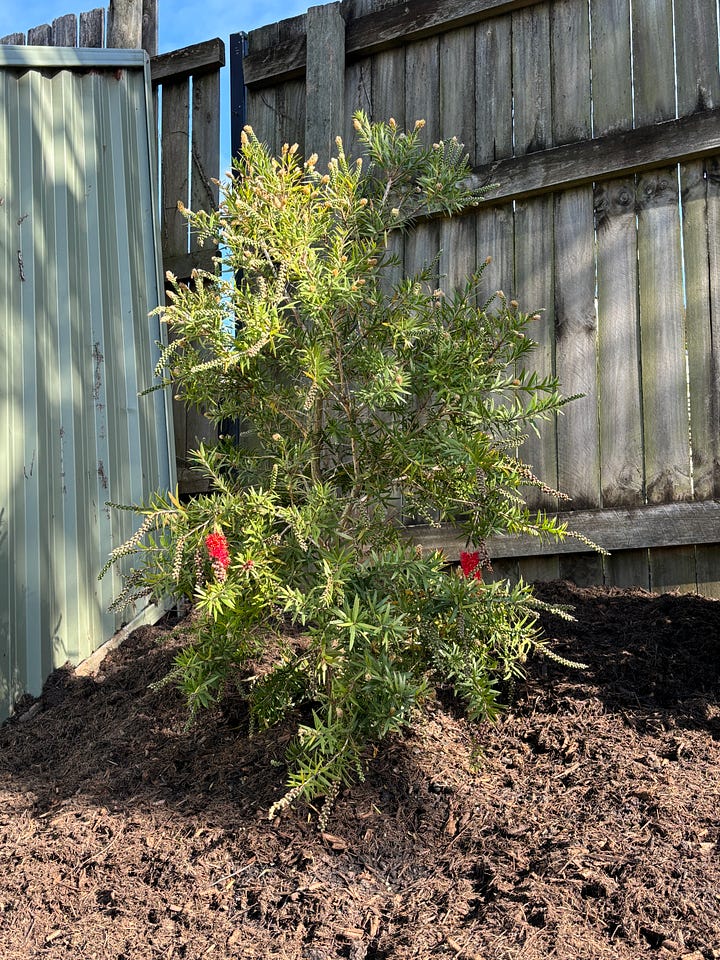
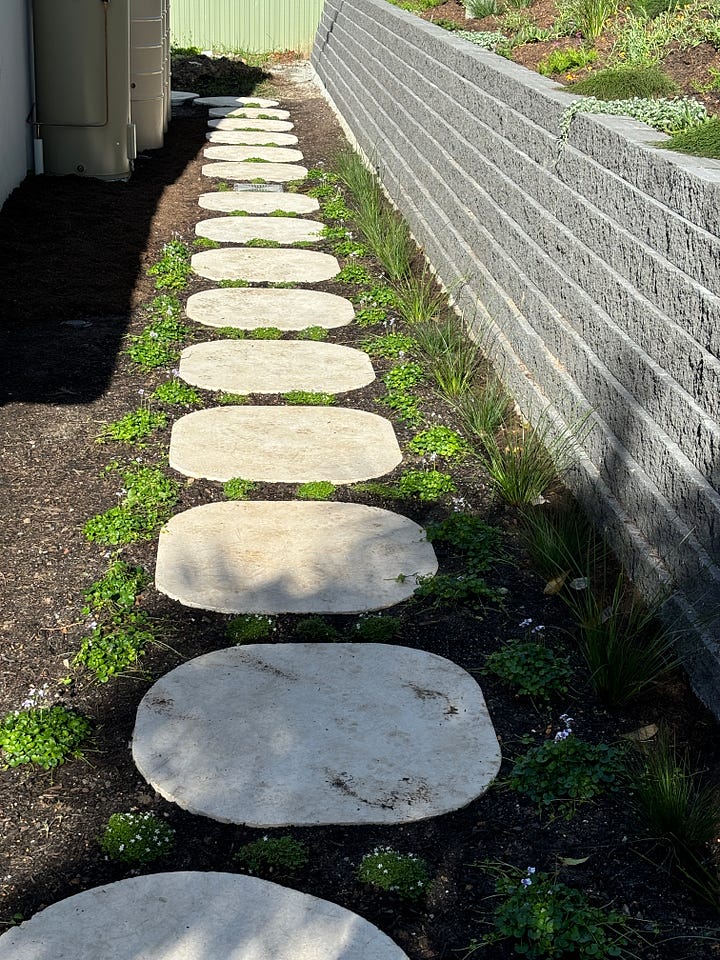
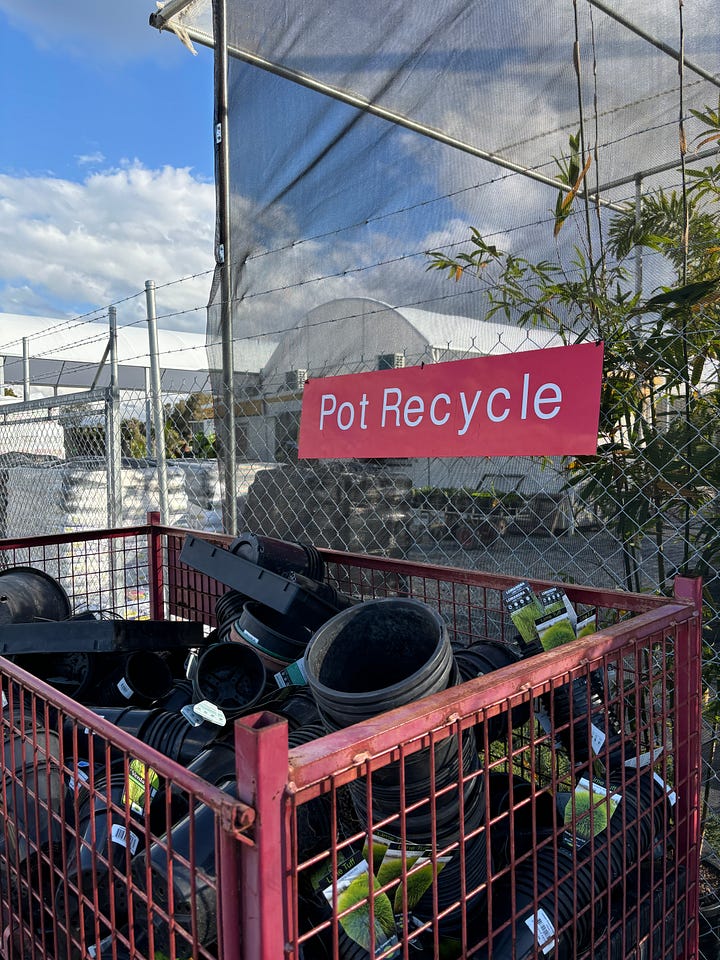
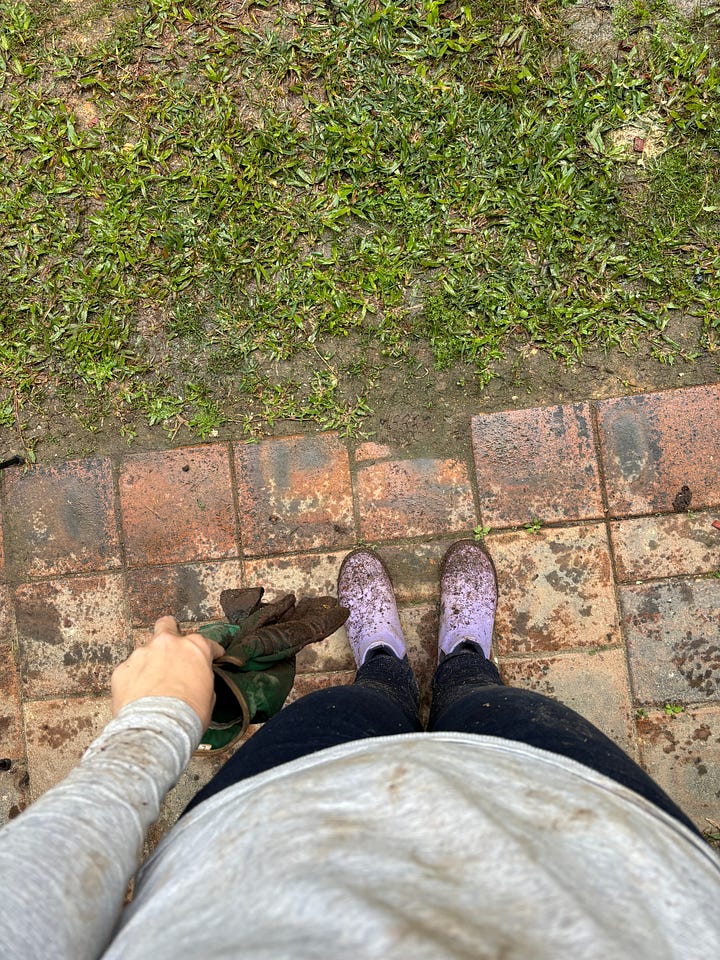
After months of searching, I finally found Chrysocephalum apiculatum (Yellow Buttons) groundcovers and Pennisetum alopecuroides (Nafray) grass to fill the gaps I'd left in the first planting marathon. Yellow Buttons have been on my garden wish list since I spotted them in this gorgeous garden by Fig Landscapes.
I also found some of the Nafray grass with its soft, fluffy plumes. I've been so excited to get my hands on these.
Planting the last four metres of the retaining wall garden. Almost finished.
I planted half a dozen Myoporum parviflorum Fine Leaf, aka Creeping Boobialla with the hopes it will eventually spill down the front of the retaining wall. It's cheaper and faster growing than the Casuarinas I used at the start of the wall. It's a lovely shade of lime green that will contrast nicely with the darker-hued plants in the garden and, come Summer, will grow pretty pink and white star-shaped flowers.
I've had the sweetest Banksia spinulosa, aka Stumpy Gold, in a pot for the last six months, not sure where to plant it, so it sat waiting. Then I saw this picture and thought a cluster like this would be perfect for the end of the retaining wall. It’s behind the future greenhouse and will be hard to access, so I wanted something that has almost zero maintenance long-term. Plus, they'll attract the small birds that generally like denser vegetation to hide in, and Banksia is loved by nectar eaters.
We've seen a decline in smaller bird species in backyards as many of the trees and ornamentals found in a typical Australian garden encourage your larger, more aggressive carnivorous species like Magpies (Cracticus tibicen) and Pied currawongs (Strepera graculina). Our last house had a shrubby garden in the front and we saw Little wattle birds (Anthochaera chrysoptera) and Blue-faced honeyeaters (Entomyzon cyanotis) every day. They were lovely. Noisy but lovely. There are also dozens more smaller species like finches and wagtails I’d love to attract to the garden.
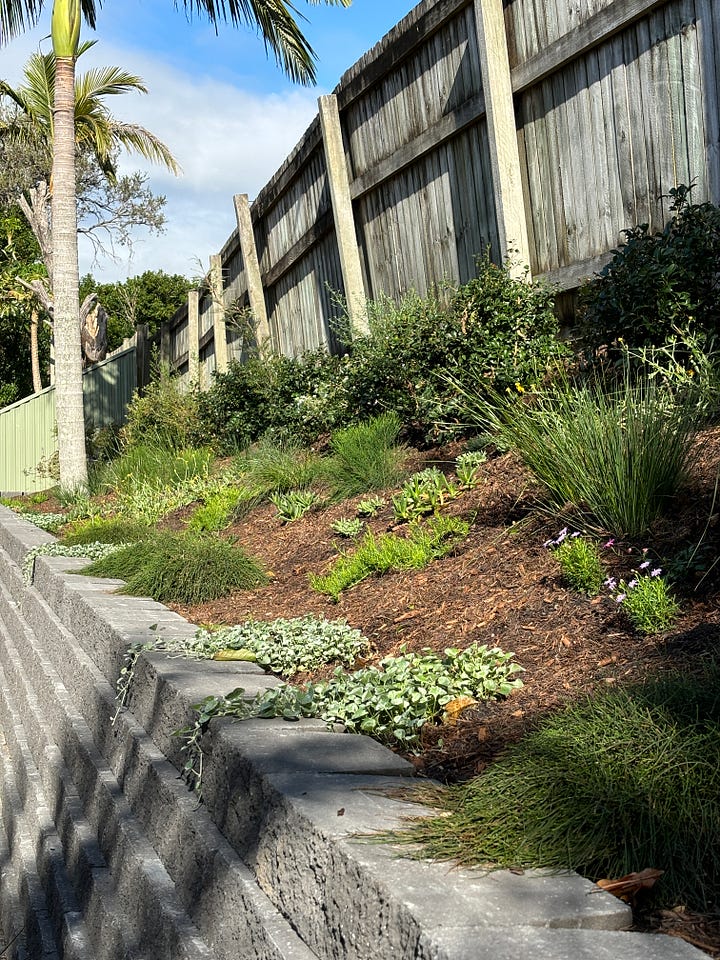
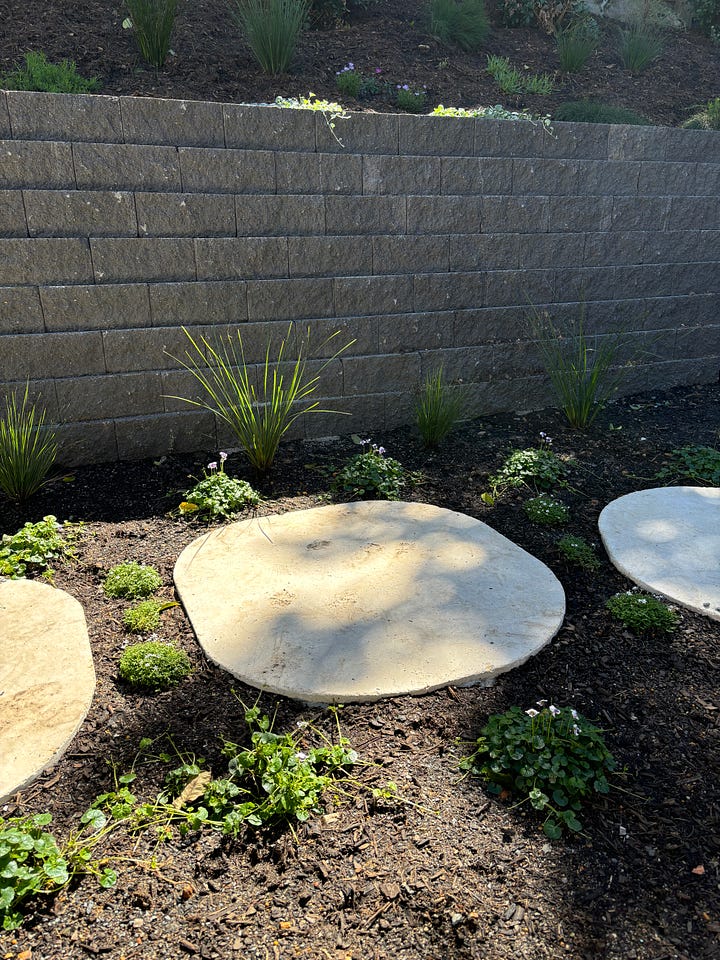
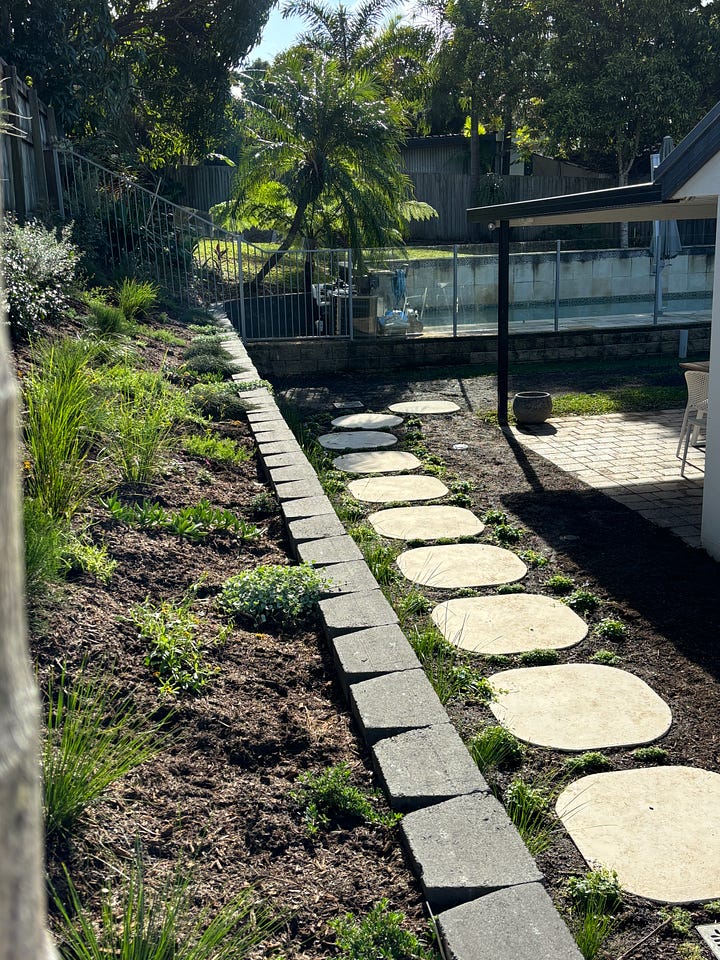
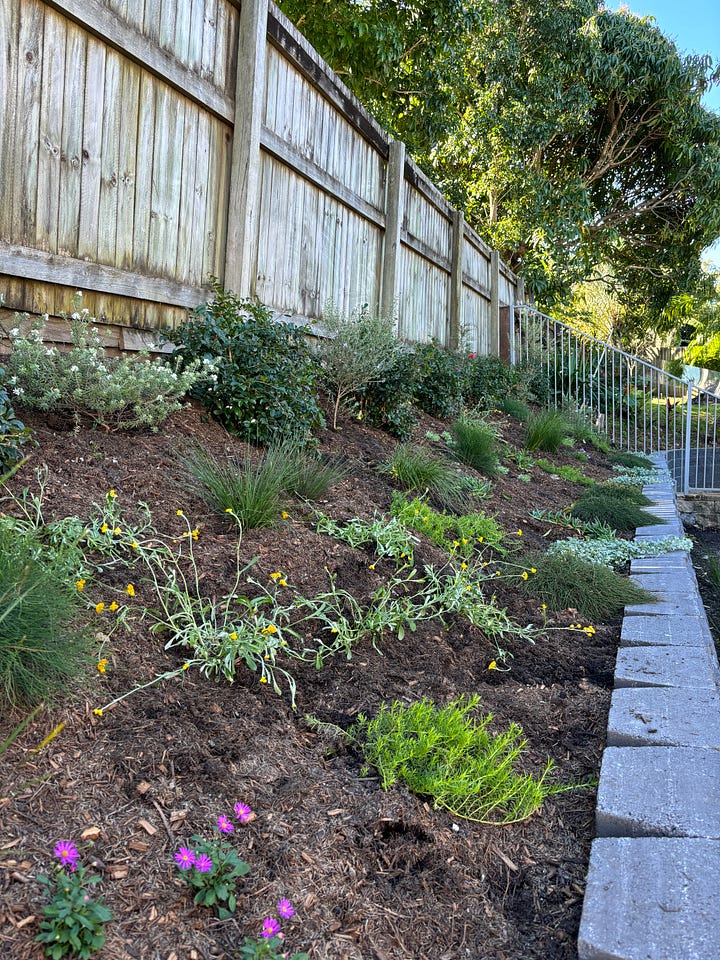
Unfortunately, I only have one Banksia. I’m visiting a plant market next weekend hoping to find 4-5 more to create the vision. Almost done.
Lastly, in the very back corner, right behind where those Banksias will live, I planted a gorgeous Callistemon. A weeping bright red bottlebrush that just started to burst into flowers this morning.
And the rest of the corridor?
Well, I finished off the Pratia between the steppers, now waiting for around a dozen more pots of Viola and Lomandra grasses to finish those last few metres. Almost there.
What's been happening in the garden
After a week and a bit of heavy rain, everyone is settling in nicely, and no losses, fingers crossed.
It was touch and go for the ivory Whip and Lollypops Grevilleas for the last few weeks in the retaining wall. Thinking they might have root rot. But the yellowing has stopped, and both are producing new flowers. Maybe they just needed a good deep water with the rain.
The cold is retreating, as are the fuzzy yellow flowers on the Banana Custard Grevillea and the pink Pheballium. I tried to plant a good mix of natives that flower during different times of the year. To support the pollinators and beneficial insects, but also, so I have an array of flowers to enjoy all year round.
The front porch garden is filling in fast. Though it still feels a bit bare, I'm considering training some Star Jasmine up the wall. It's one of my favourite flowers for that sweet honey scent. For me, that's the smell of summer.
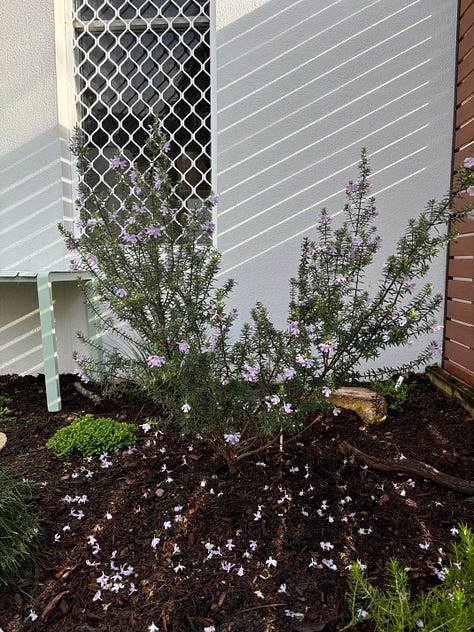
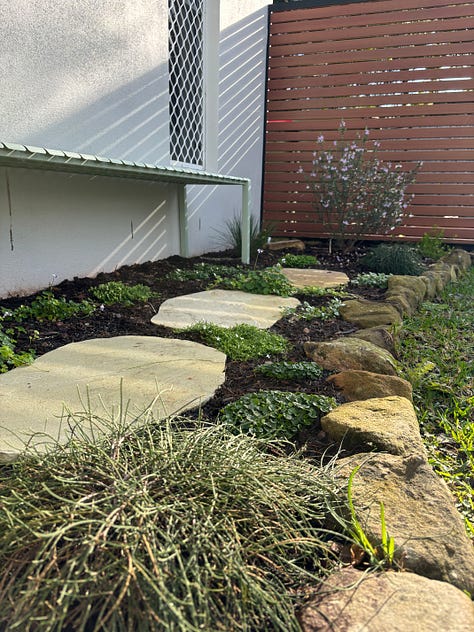
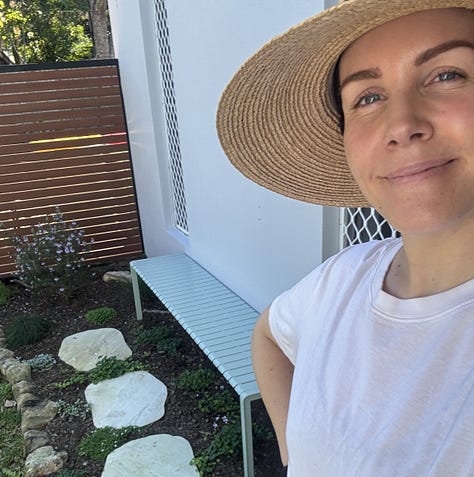
More flowers are popping out everywhere. Makes me excited for spring and summer to see how it all looks.
I’m spotting more wildlife every day. A few small skinks sunning themselves on the timber in the veggie garden. More iridescent blue dragonflies flitting through the corridor yesterday. They seem to like the viola. Two honeybees and a few tiny black stingless bees buzzing around the lavender and rosemary now they’ve started flowering again.
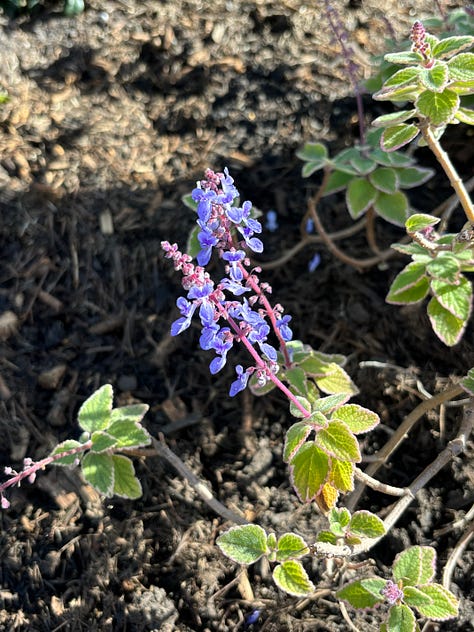
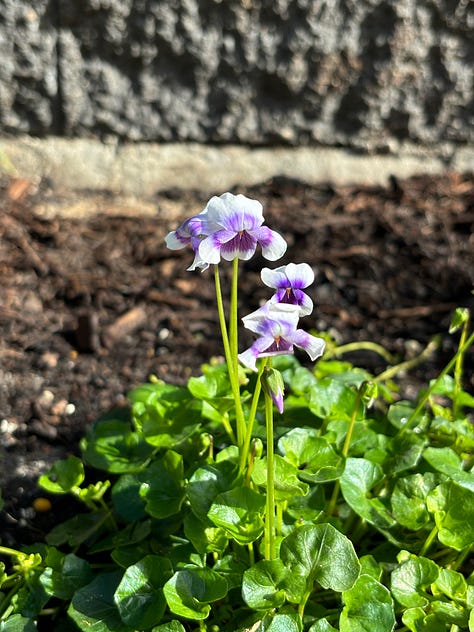
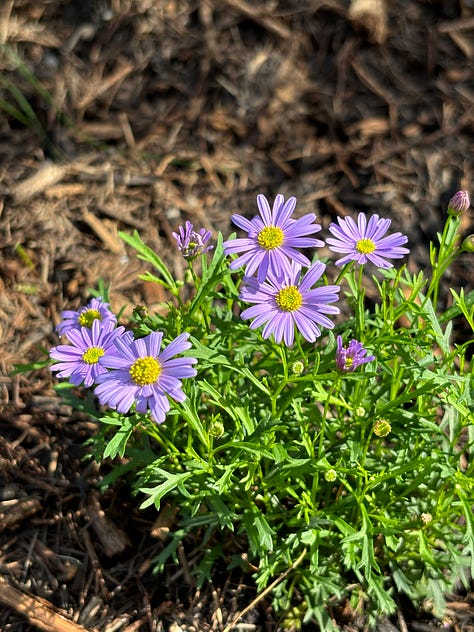
Waste not, want not.
During the five-hour effort to make a dent in the garden, while I was planting, Dave was filling up garden bed one and bringing a little organisation to the chaos that is currently the veggie garden area down the side of the house.
He dug out and saved the grass at the bottom of the completed veggie bed one, to lay over the exposed clay and muddy bits in the Library Garden (so named for the area outside my home office/library). I have a smidge of knowledge about permaculture and admire the principle of using what you have and producing little to no waste. So where we can, we’re trying to repurpose materials in other parts of the garden.
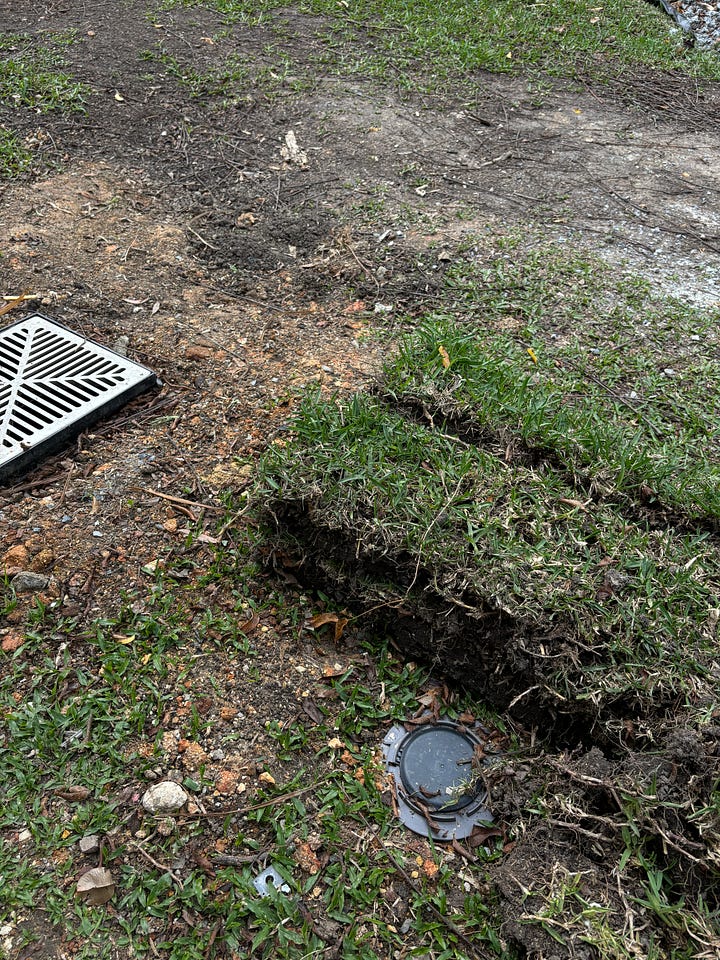
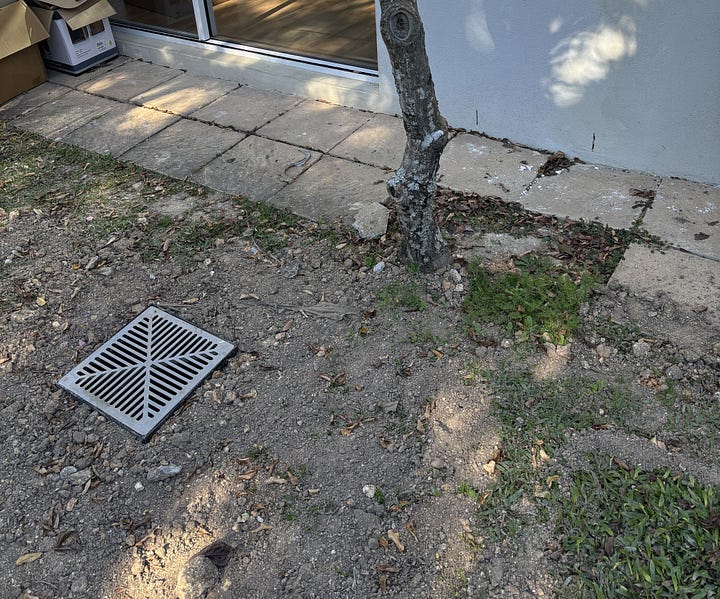
In May, we cleared out two existing garden beds from the veggie area of the garden (a few marigolds, some daffodils, I've potted the tubers, but mostly weeds) to make room for shelves and where the new beds will go.
The soil was good and appeared to be nutrient-rich, full of earthworms and curl grubs. I'd dropped some compost a few months prior, a dozen tomato and pumpkin seedlings have popped up. So, we saved the soil to use in the raised veggie beds.
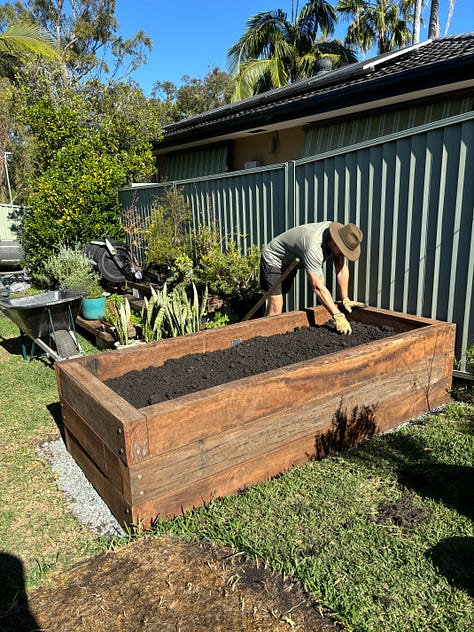
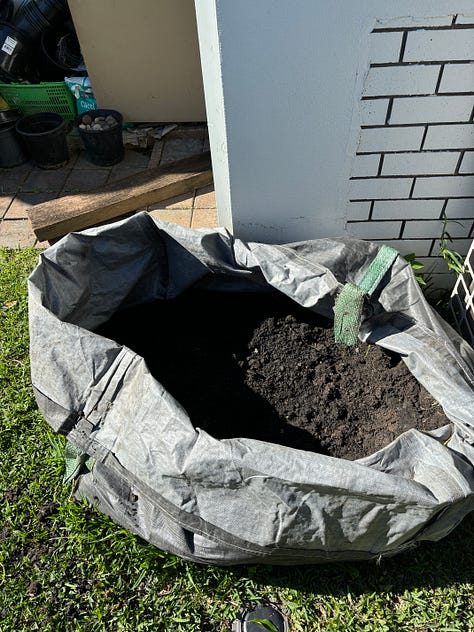
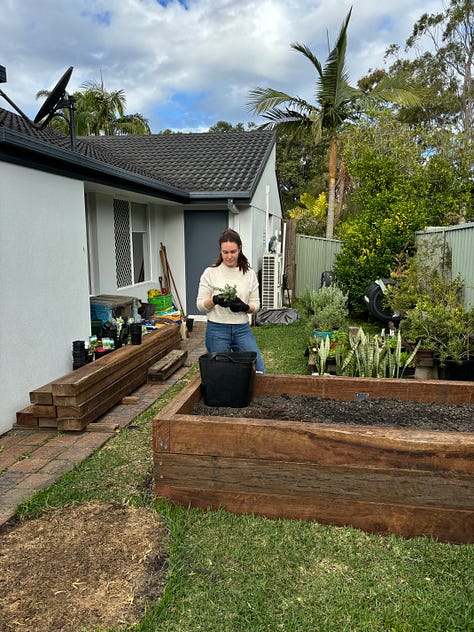
Filling the beds. In October last year, Dave started two hot compost piles using mulch from the ground down, palm tree stumps and garden debris. Using the saved soil and some of that compost, the first bed is almost full. A huge money saver, not having to buy fresh soil. I have ordered some bags (Rocky Point Organic Health Garden Soil) to top the beds off, create some nutrient-rich topsoil, and give the veggies the best start to life, which should be arriving by the end of this week. Then I can get stuck into almost spring planting.
Another week, a few more plants in the ground, another small step toward the dream garden. Remembering that there's joy in the slow, steady process and watching it all come together bit by bit.
Almost there, but not really, and that's perfectly fine with me.






I would absolutely buy the book version of your posts! They’re so informative and interesting and encouraging for other SEQ beginner native gardeners!